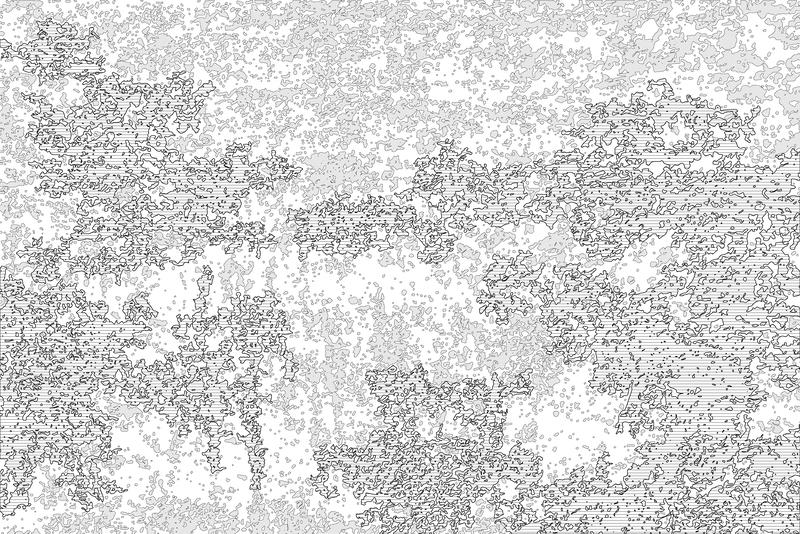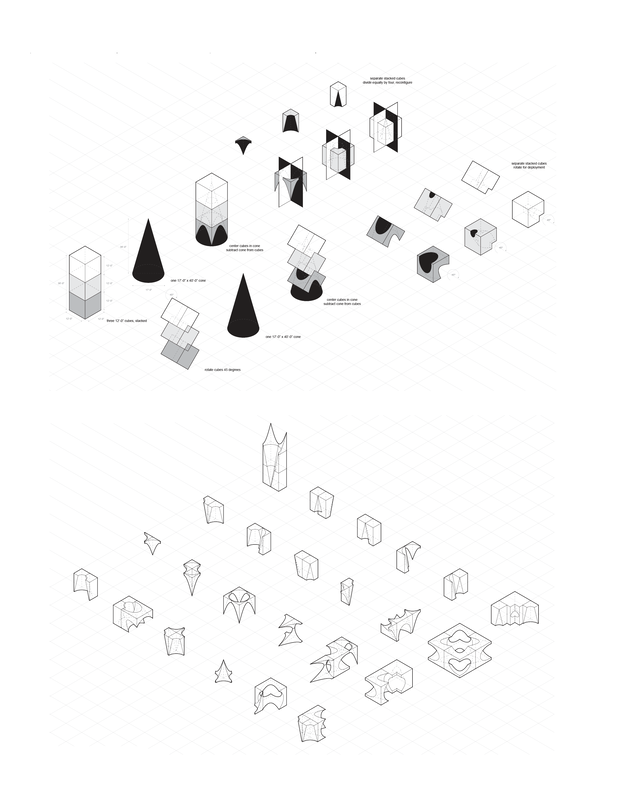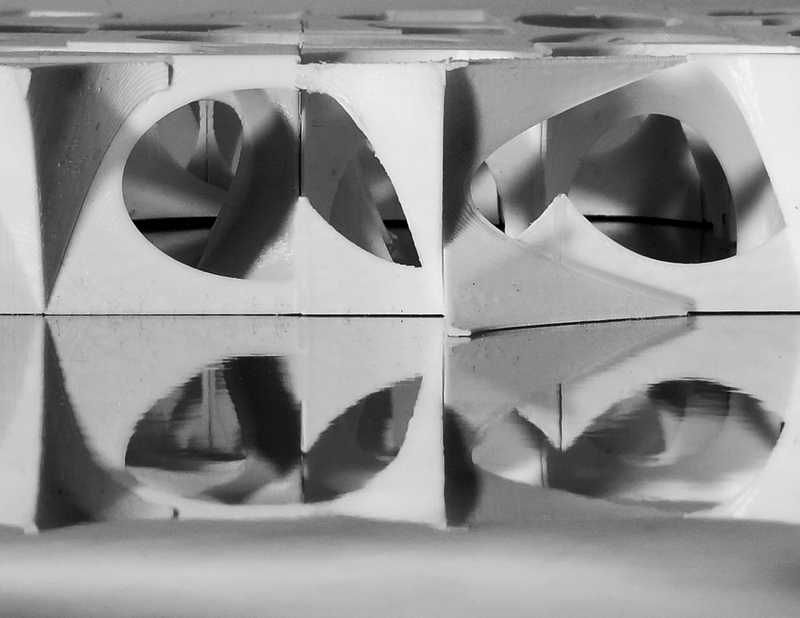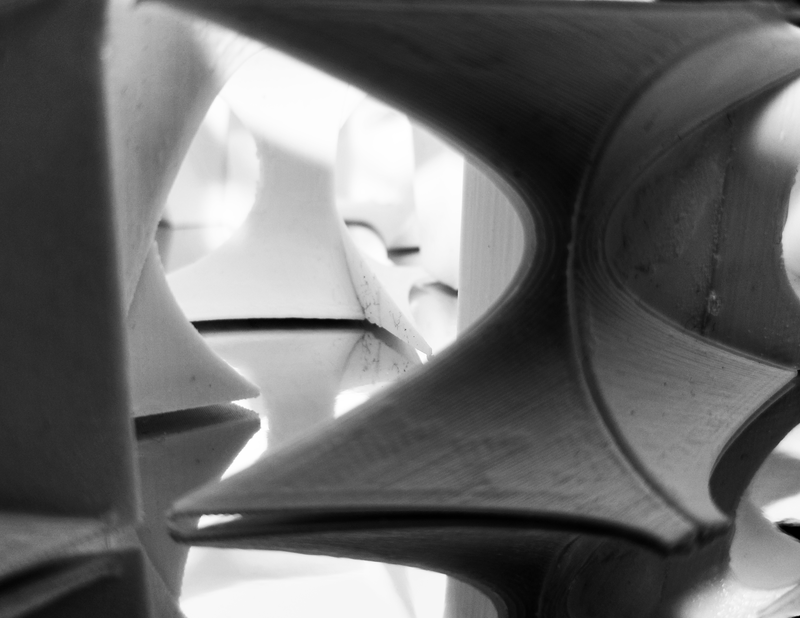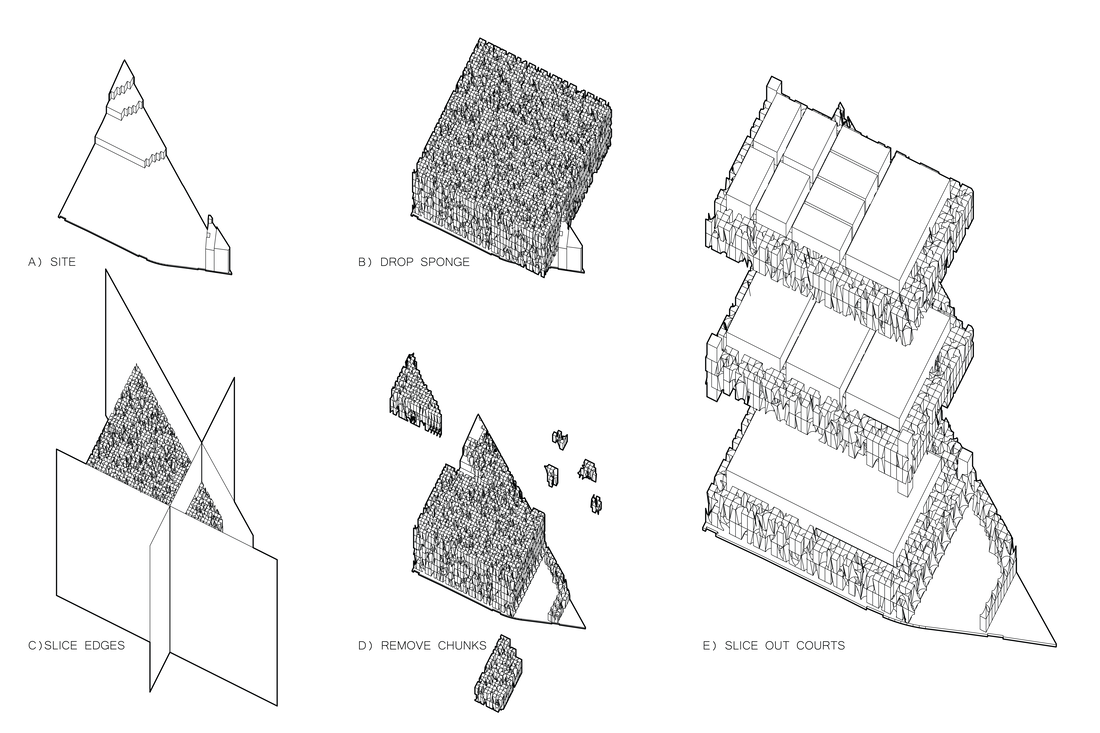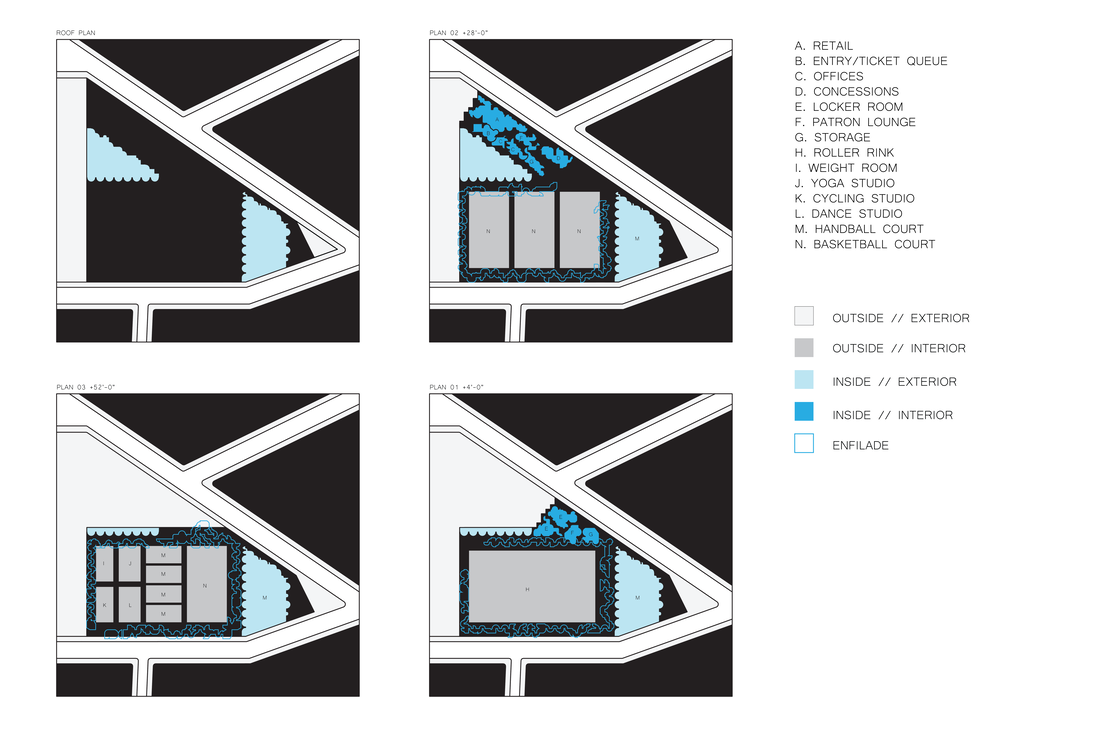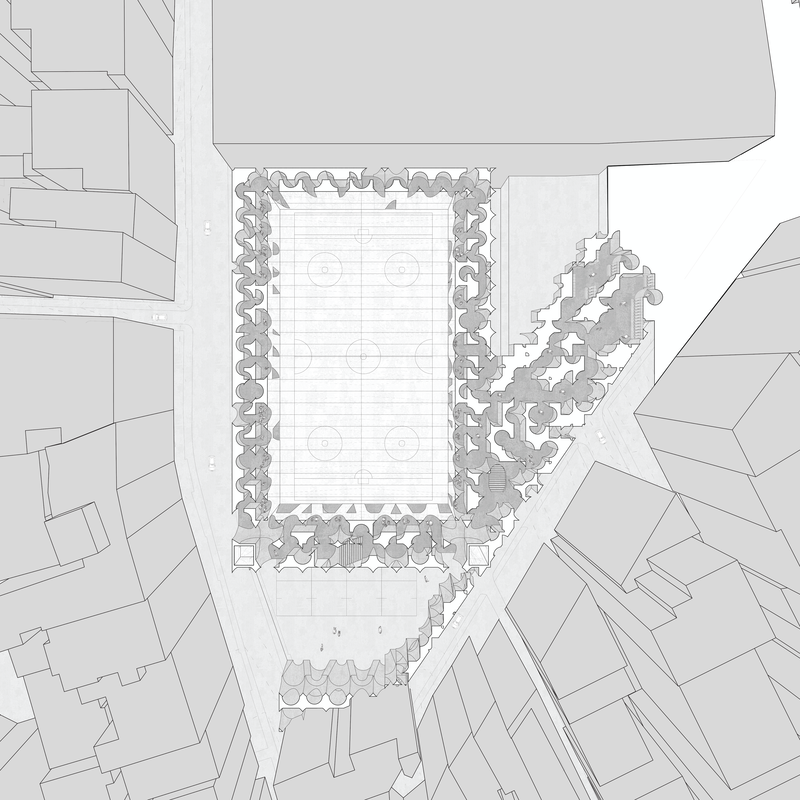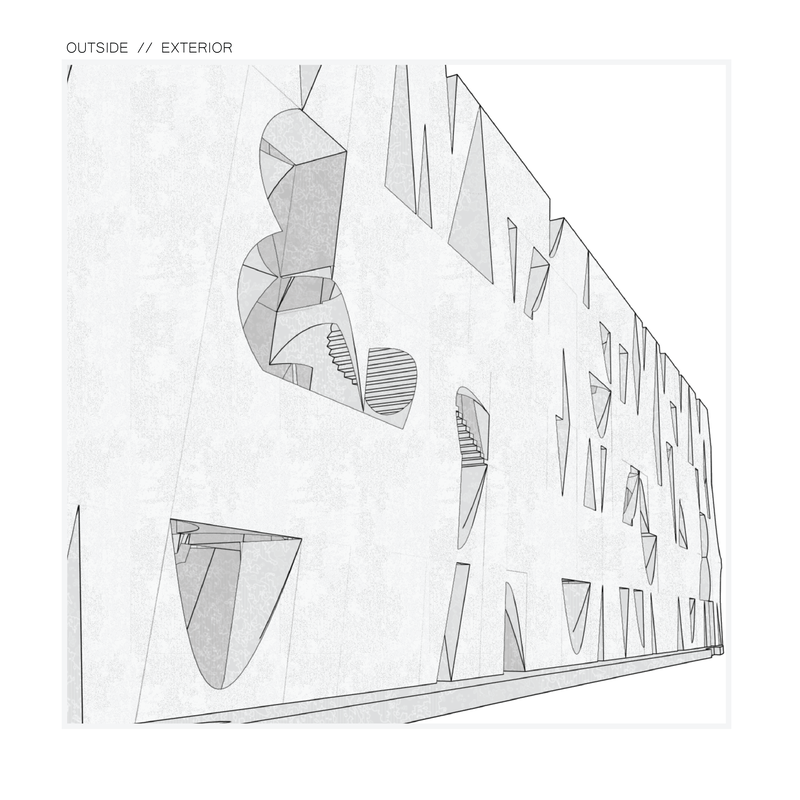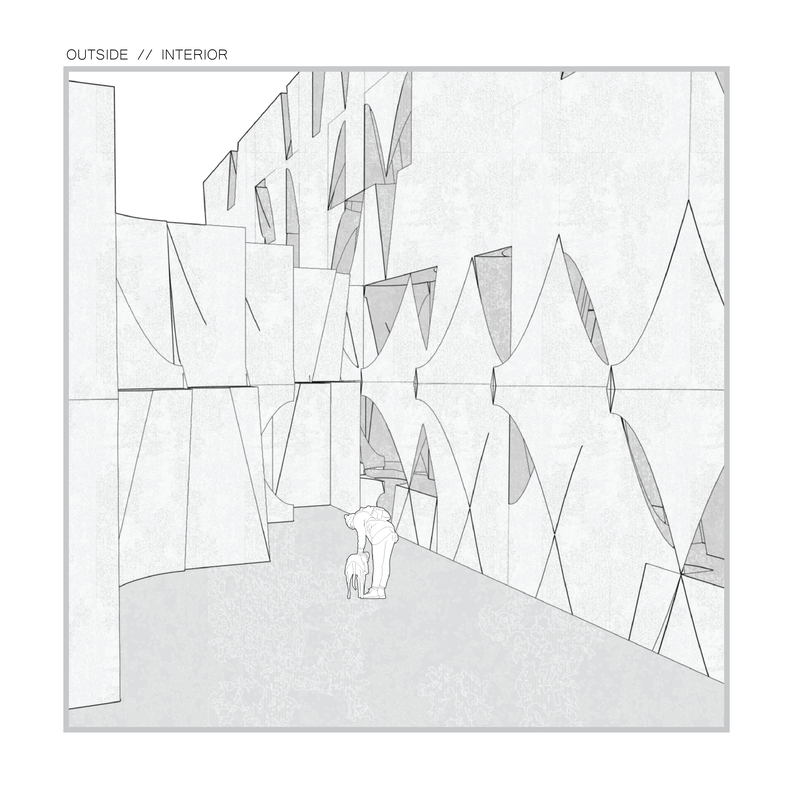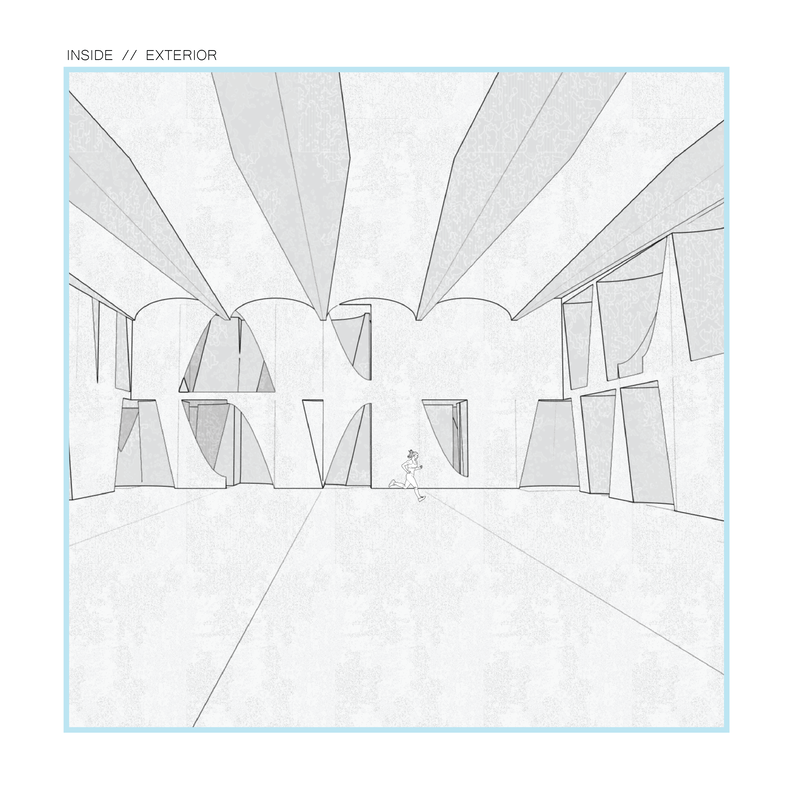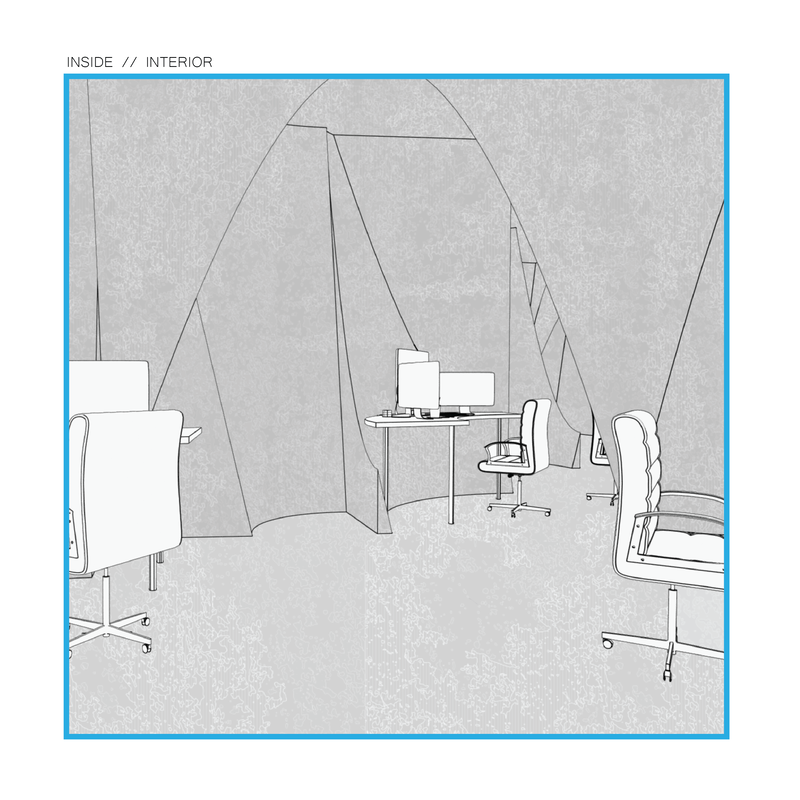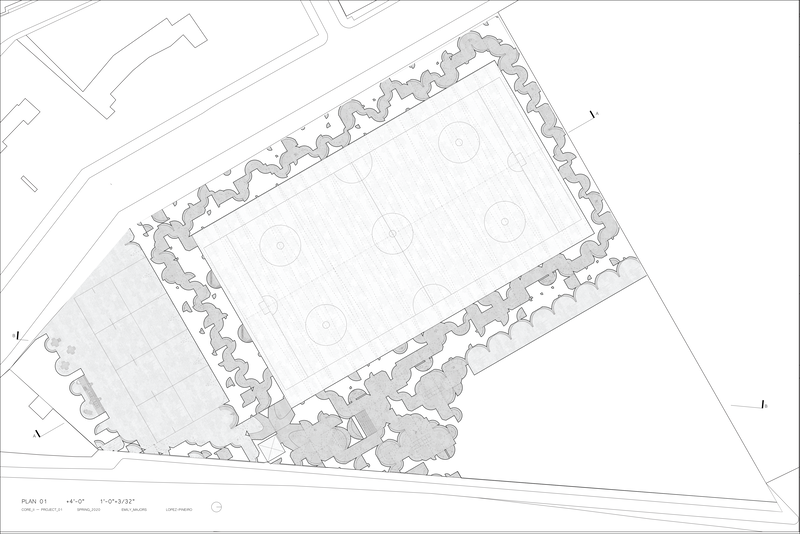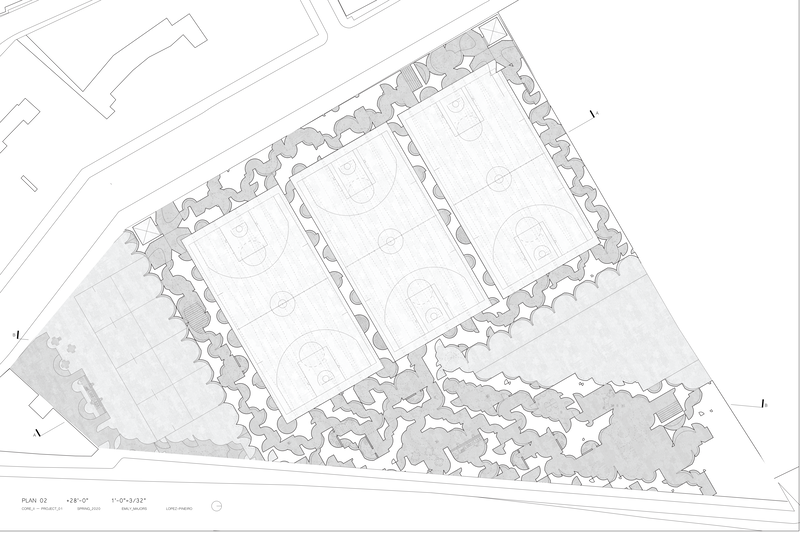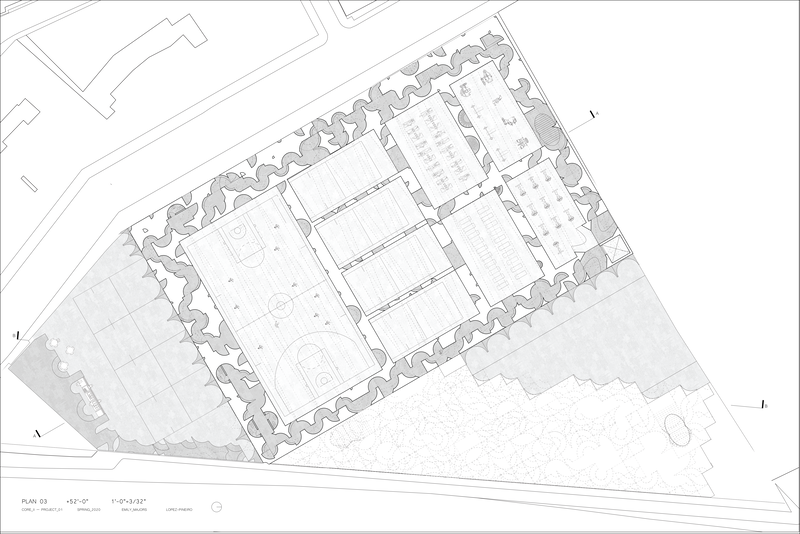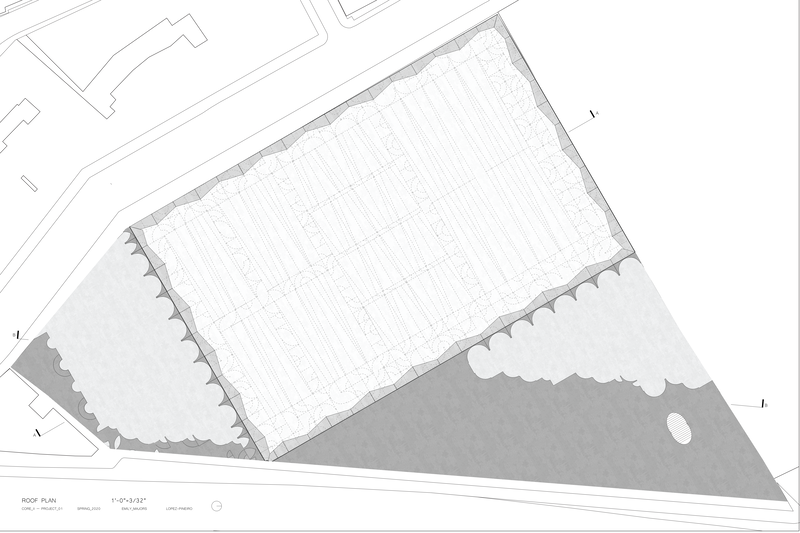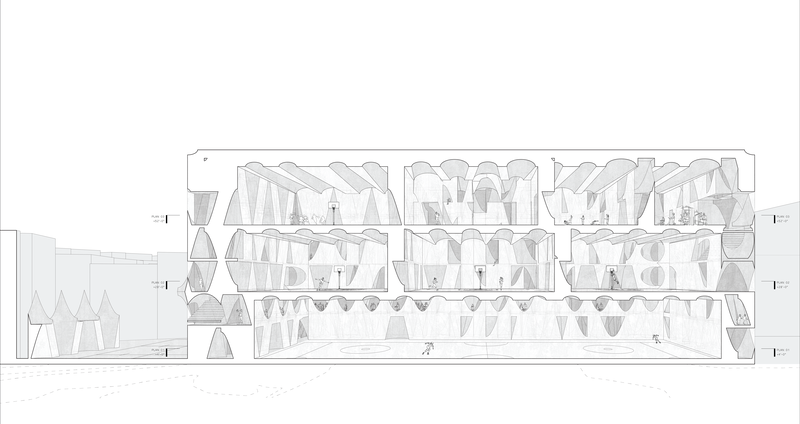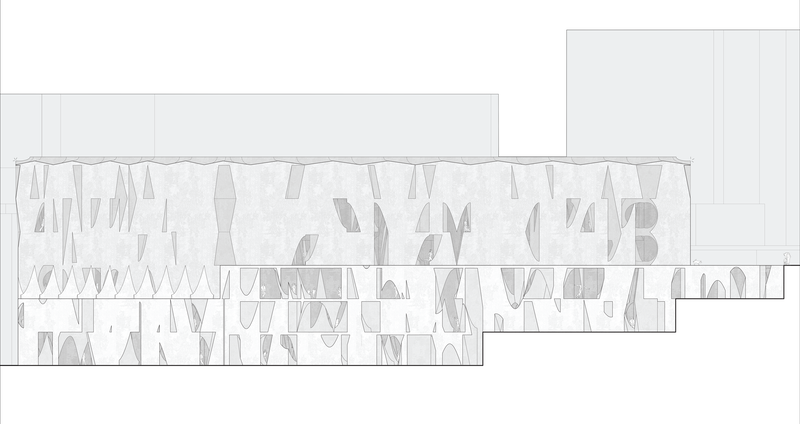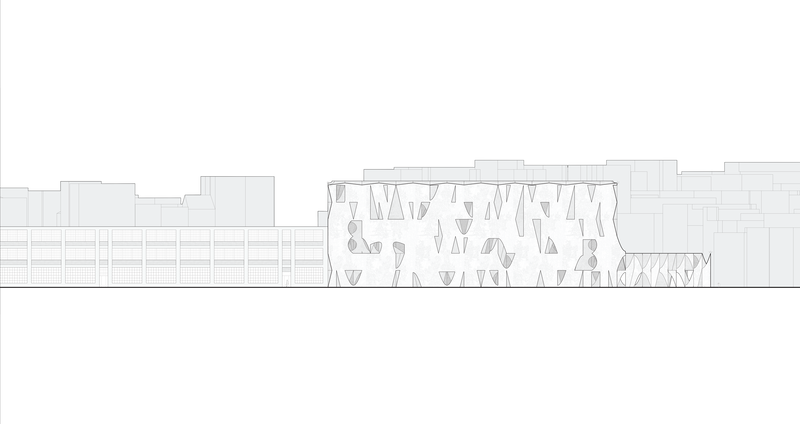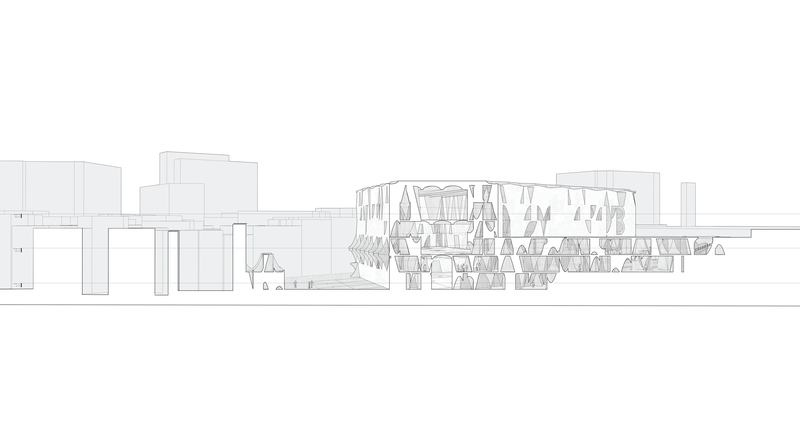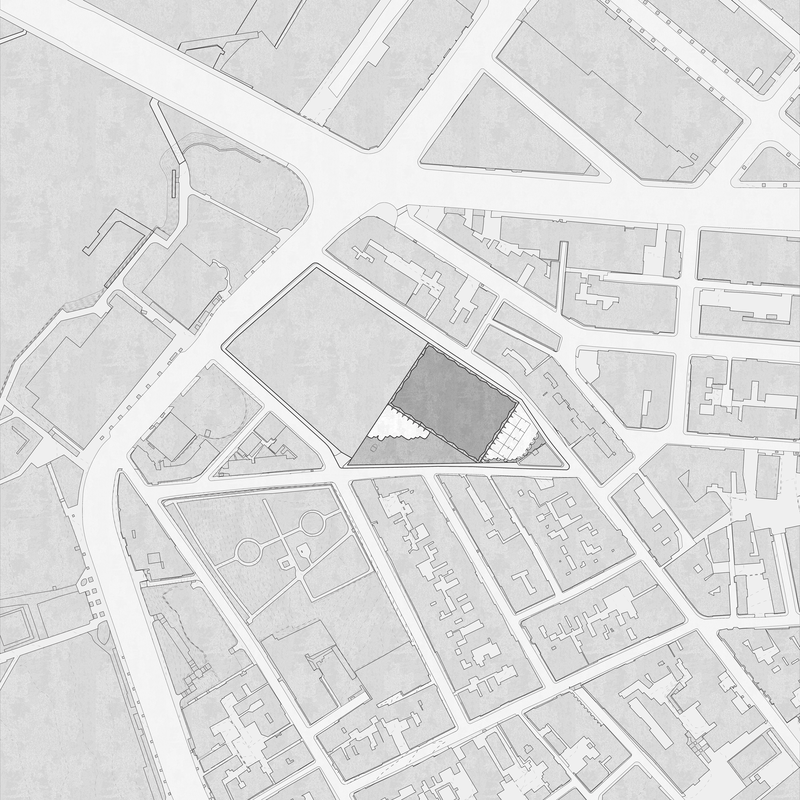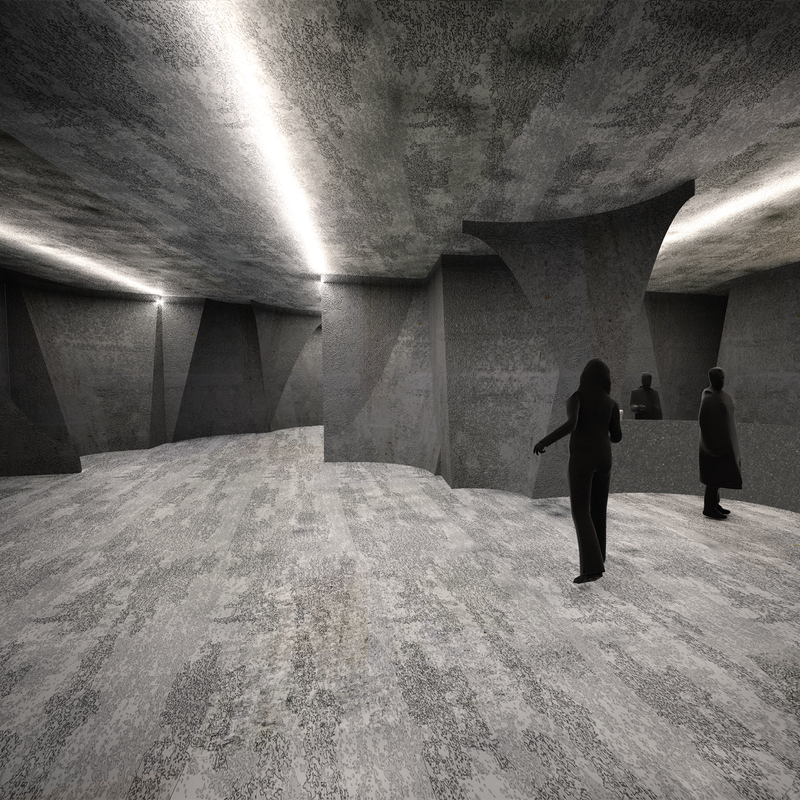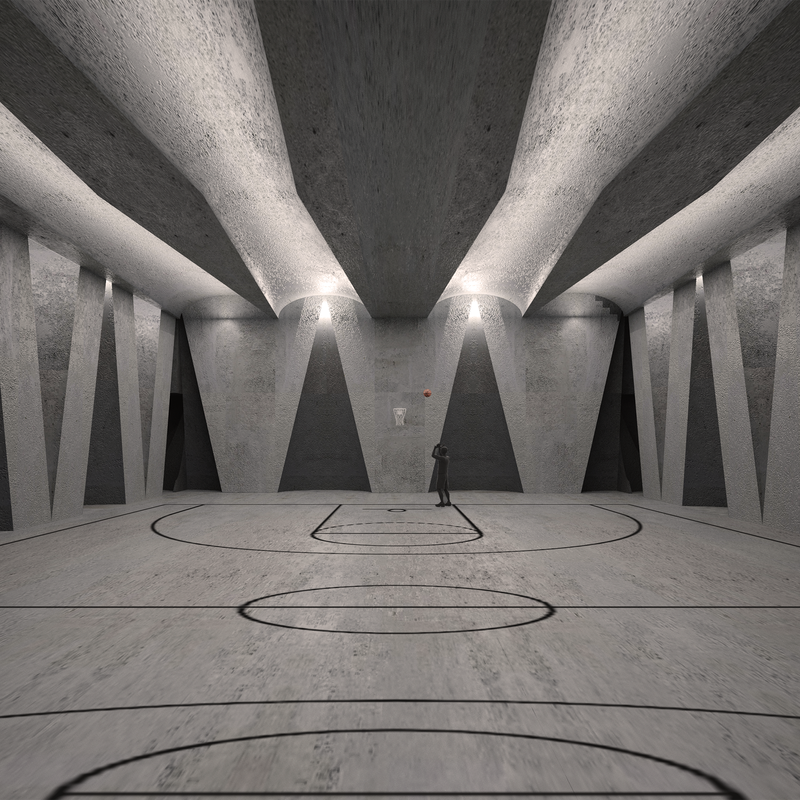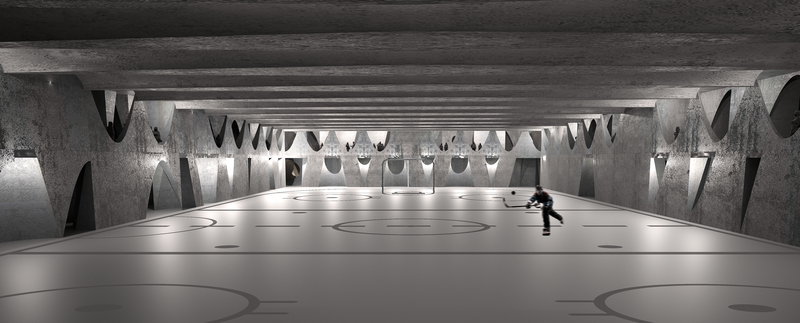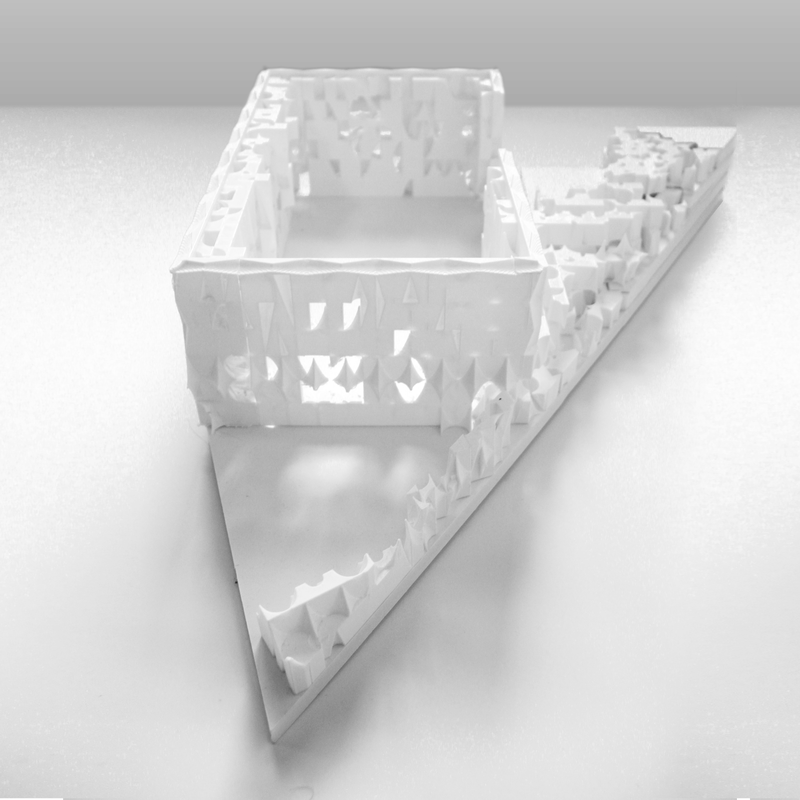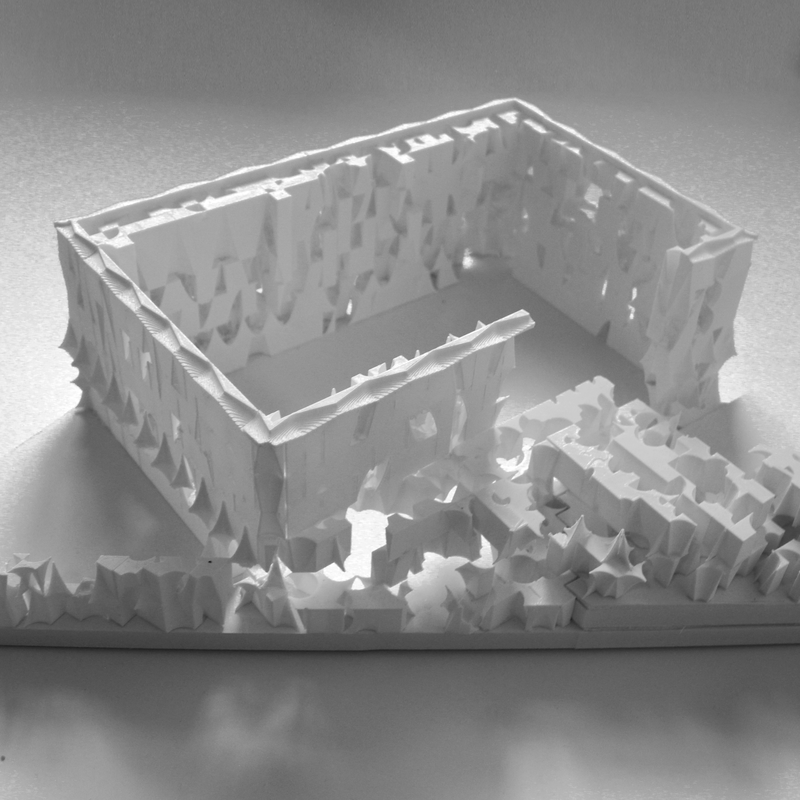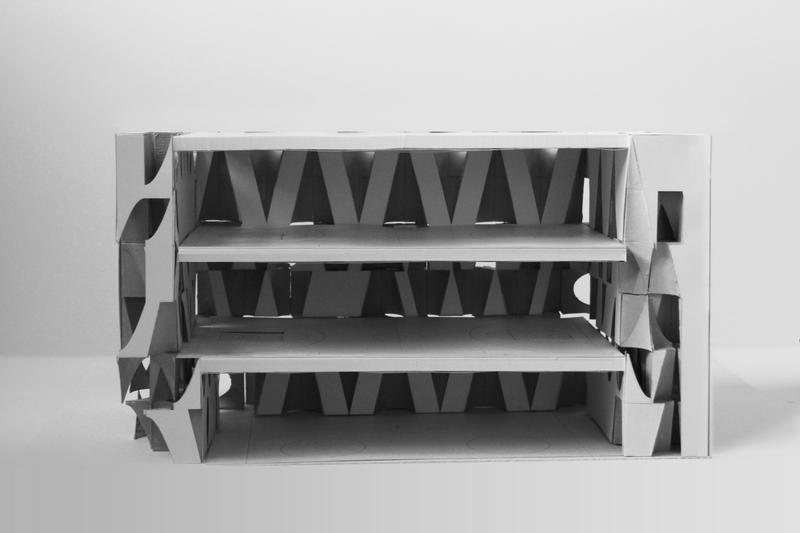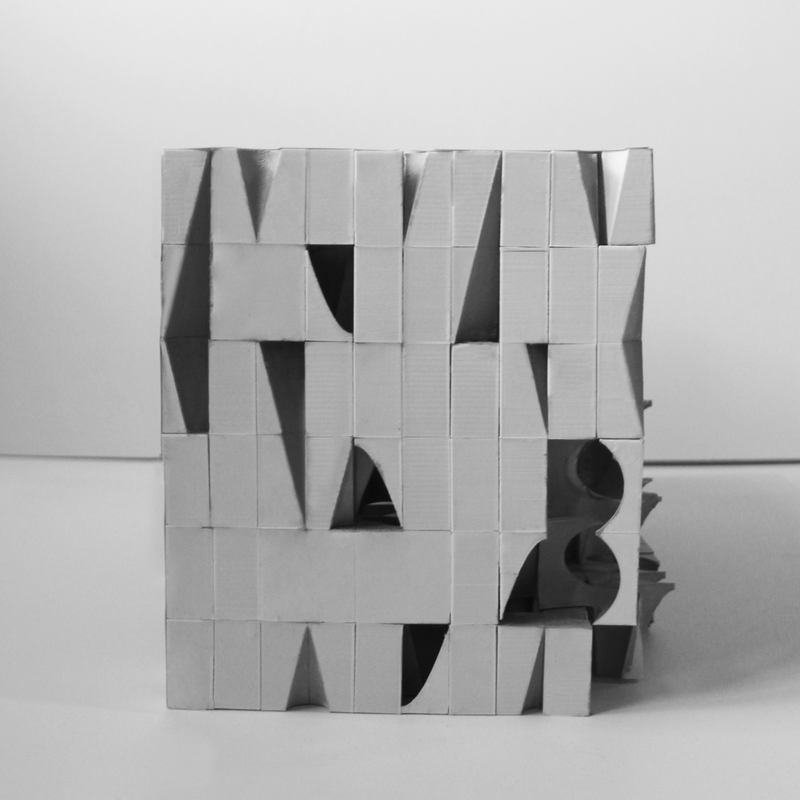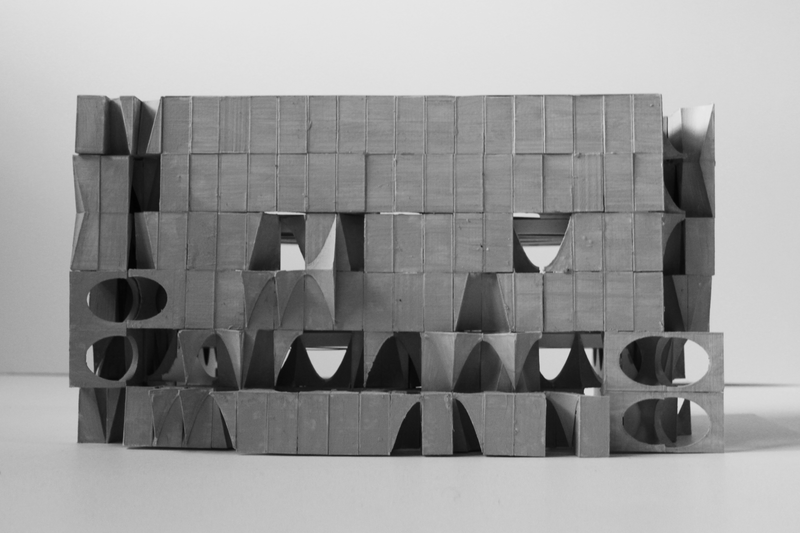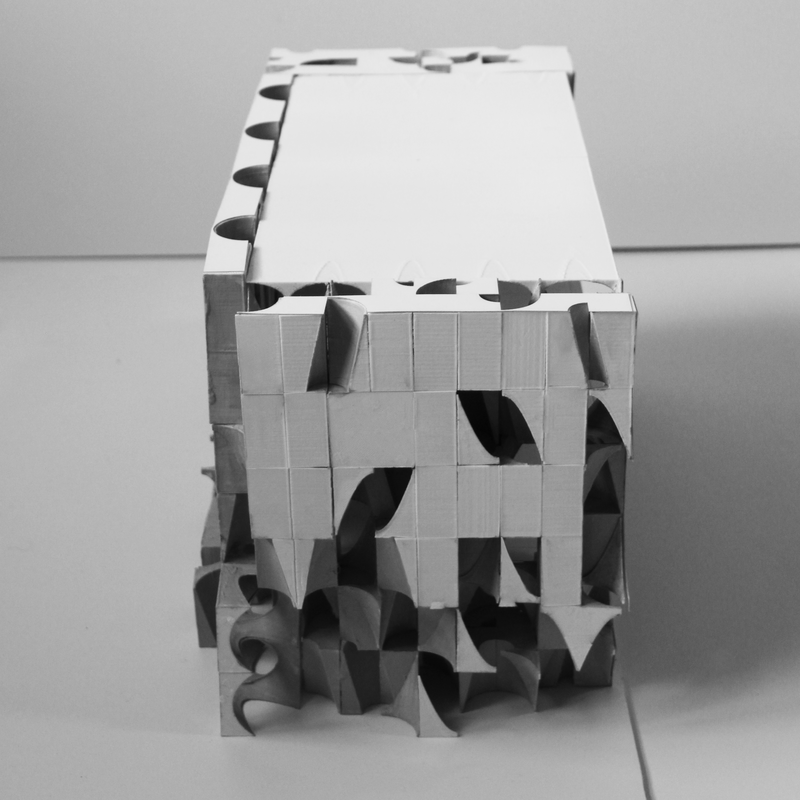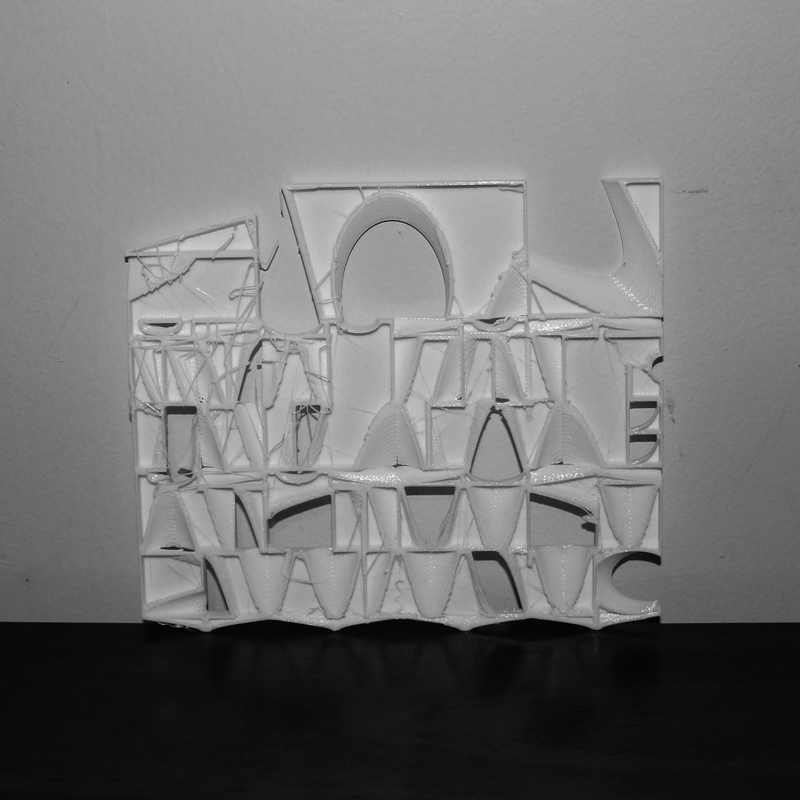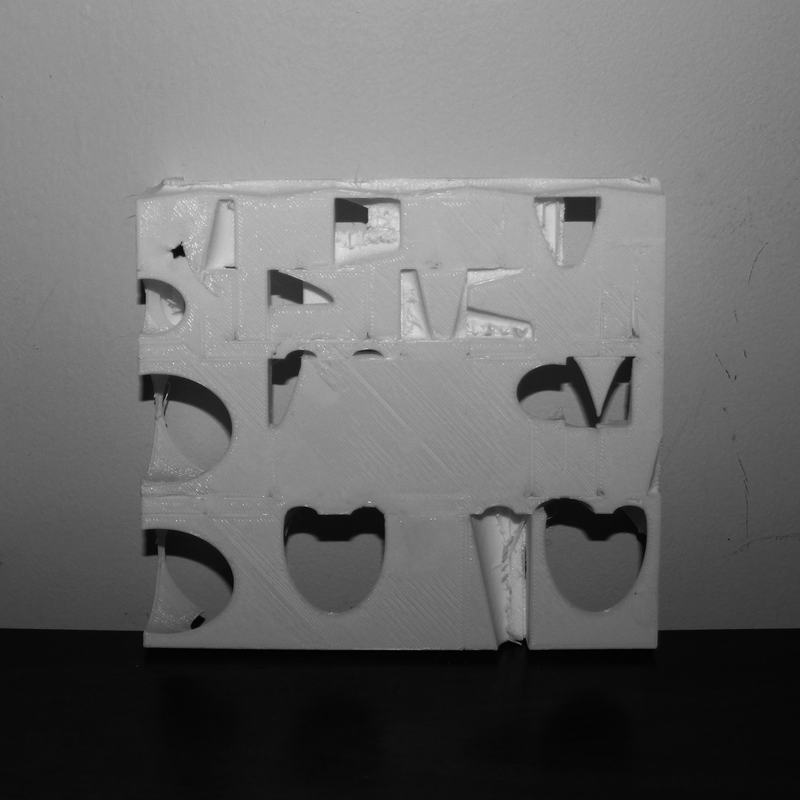SPONGE-REC
CORE II—HARVARD GSD
SPRING 2020
INSTRUCTOR: SERGIO LOPEZ-PINEIRO
SPRING 2020
INSTRUCTOR: SERGIO LOPEZ-PINEIRO
This project began with an investigation of the spatial bay. The spatial bay used in this project was derived from a series of boolean difference operations using cones and cubes. The resulting booleaned modules were arranged to create various formal pairings that arrayed into a variety of spatial conditions.
The project proposal is a recreational center located in North Boston. The spatial bay modules were packed into a "sponge" and dropped on the site. Components were selectively removed or cut to accommodate program and produce different spatial qualities. The project negotiates the difference between interior versus exterior (meaning inside of the building or outside of the building) and outside versus inside (meaning outside of the sponge or inside of the sponge). These two pairs of spatial types produced four types of spaces in the project.
These four conditions emphasize the range of potentials this spatial bay type provides. On the inside of the sponge, the space becomes very articulated, discrete, and tortured. On the outside of the sponge, the structure appears flat and spacious.
Depending on one's location inside or outside of the sponge, the project can be misread as a flat surface with punched windows or as an aggregation of pointy or bubbled modules.
The project proposal is a recreational center located in North Boston. The spatial bay modules were packed into a "sponge" and dropped on the site. Components were selectively removed or cut to accommodate program and produce different spatial qualities. The project negotiates the difference between interior versus exterior (meaning inside of the building or outside of the building) and outside versus inside (meaning outside of the sponge or inside of the sponge). These two pairs of spatial types produced four types of spaces in the project.
- outisde//exterior : an outdoor space outside of the sponge, noted through the flat cutting of the sponge aggregation. This strategy was used to achieve the relationship to the street and context.
- outside//interior : an indoor space outside of the sponge, noted through the flat cutting of the sponge aggregation. This strategy was used to achieve the long spans of the courts and recreational rooms.
- inside//exterior : an outdoor space inside of the sponge, noted through the removal (not cutting) of sponge modules to produce occupiable space. This strategy was used to achieve the spatial qualities of the outdoor plazas.
- inside//interior : an indoor space inside of the sponge, noted through the removal (not cutting) of sponge modules to produce occupiable space. This strategy was used to achieve the spatial qualities of the corridors and interstitial space between larger programmatic requirements.
These four conditions emphasize the range of potentials this spatial bay type provides. On the inside of the sponge, the space becomes very articulated, discrete, and tortured. On the outside of the sponge, the structure appears flat and spacious.
Depending on one's location inside or outside of the sponge, the project can be misread as a flat surface with punched windows or as an aggregation of pointy or bubbled modules.
